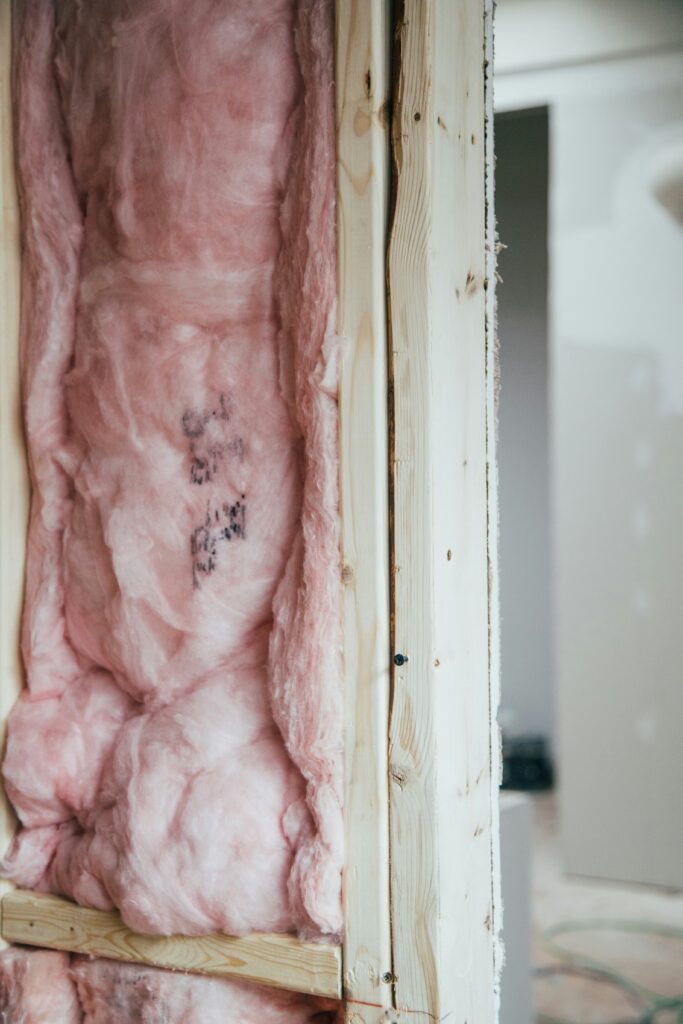Home insulation is an essential component in creating a comfortable living environment, irrespective of the season. It acts as a barrier to heat transfer, keeping the indoor atmosphere warm during the winter months and cool in the summer, thus ensuring a consistent indoor temperature year-round.
Beyond comfort, proper insulation significantly contributes to energy efficiency, reducing the need for heating and cooling systems to work overtime and thereby lowering utility costs.
In this article, we’ll explore the various aspects of home insulation and its critical role in maintaining a harmonious and sustainable home environment.

Understanding Home Insulation
Insulation is the process of creating a barrier between the inside and outside of a building to prevent heat transfer. It works by trapping pockets of air, which act as insulators, slowing down the movement of heat through walls, floors, and ceilings.
The effectiveness of insulation is measured in R-values, with higher values indicating better insulation. The type and thickness of insulation used, along with the climate in which a home is located, determine the R-value required for optimal thermal resistance.
Types of Home Insulation
The most common types of insulation are:
- Fiberglass: Made from tiny glass fibers, this type of insulation comes in rolls or loose-fill form and is often used in attics and walls.
- Cellulose: This insulation is made from recycled paper products and is typically blown into attics, walls, and floors.
- Spray foam: This type of insulation is sprayed onto surfaces in liquid form and expands to fill gaps and crevices. It’s commonly used in attics, walls, and basements.
- Reflective barriers: These are shiny surfaces designed to reflect heat radiation. They’re commonly used in attics and walls.
Benefits of Proper Home Insulation
- Energy efficiency: By reducing the need for heating and cooling systems, insulation helps save energy and lower utility costs.
- Improved indoor air quality: Insulation also acts as a barrier against outdoor pollutants, keeping the air inside your home cleaner and healthier.
- Consistent indoor temperature: With proper insulation, you can maintain a comfortable and consistent temperature throughout your home, regardless of the weather outside.
- Reduced noise pollution: Insulation not only blocks heat transfer but also dampens sound, creating a quieter living environment. Contact the professionals in your area to learn more about how insulation helps reduce noise pollution.
Maintaining Your Home Insulation
Proper maintenance of home insulation is essential to ensure its effectiveness and longevity. Here are a few tips to keep in mind:
- Regularly check for damage: Check your insulation at least once a year for any signs of damage, such as moisture or mold growth.
- Replace damaged insulation: If you find any damage, it’s crucial to replace the affected area immediately to prevent further damage and maintain the insulation’s overall effectiveness.
- Keep insulation dry: Moisture can significantly reduce the R-value of insulation, so it’s essential to keep it dry at all times.
How to Choose an Insulation Material for Your Home
Choosing the right insulation material for your home involves considering several key factors to ensure optimal energy efficiency and comfort. Here’s what to look out for:
- Assess the R-value requirement: Based on local climate conditions, determine the recommended R-value for your area. This will help you choose an insulation material that provides adequate thermal resistance.
- Consider the type of construction: Your home’s structure, whether new construction or an existing building, will influence your insulation options. For instance, spray foam might be more suitable for hard-to-reach areas or renovations.
- Evaluate your budget: Costs can vary significantly between different insulation materials. While initial investment is an important consideration, consider long-term savings on energy bills.
- Think about environmental impact: If sustainability is a priority, consider insulation materials that are made from recycled materials or have a lower environmental footprint, like cellulose or certain types of spray foam.
- Consult with professionals: It can be beneficial to seek advice from insulation professionals who can provide insights based on experience with different materials in various climates.
- Review ease of installation: Some insulation types require professional installation, while others may be suitable for DIY projects. Consider the complexity and potential disruption to your home when choosing.
- Look into potential health risks: Certain insulation materials can emit volatile organic compounds (VOCs) or may be irritating to the skin or respiratory system. Research and choose materials that pose minimal health risks to occupants.
Conclusion
Home insulation plays a crucial role in maintaining a consistent and comfortable indoor temperature, promoting energy efficiency, and ensuring a healthier living environment. By understanding the types of insulation available, their benefits, and how to choose the right material for your home, you can make informed decisions to create an optimal living space for you and your family.
Remember to maintain your insulation regularly to ensure its effectiveness and consult with professionals for expert advice. So, make sure to invest in proper home insulation for a sustainable and harmonious living environment.





